Treating Acne with Laser Therapy: Can it Benefit You?
Laser or Light Therapy can be Used to Treat Acne
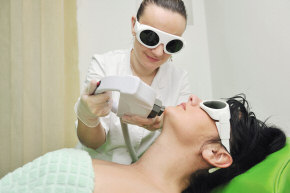 Today, acne sufferers can resolve their skin condition by choosing
between a
number of light or laser therapies. To better understand how laser therapy can
help, itís important to know how acne develops in the first place. Today, acne sufferers can resolve their skin condition by choosing
between a
number of light or laser therapies. To better understand how laser therapy can
help, itís important to know how acne develops in the first place.
A Common Skin Condition
Acne is indeed a common problem as it most frequently affects young people
between 12 and 30 years old. In fact, approximately 30% of the people who see a
dermatologist do so because they have acne. An acne condition occurs when
Propionibacterium acne or P. acne is produced via the sebum or oil in the
sebaceous glands.
How Whiteheads and Blackheads are Produced
In turn then, an overproduction of sebum or oil in the sebaceous glands
causes the skin to become clogged with oil, dirt, and P. acne. As a result, acne
develops and takes the form of a comedo. A comedo is simply a clogged pore in
the skin.
Close-up of a Common Comedo Referred to as Blackheads:
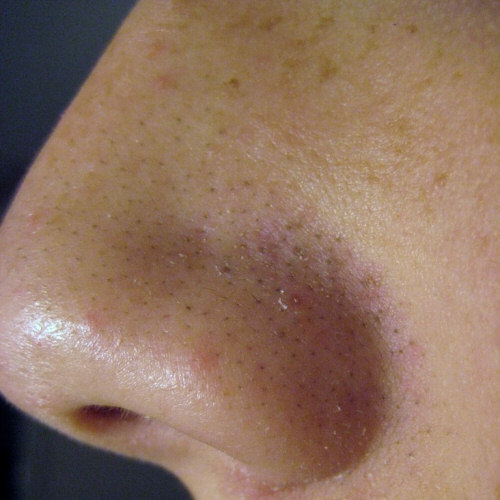
A comedo may appear at first as a
whitehead, denoting a whitish cast, and later turn into a blackhead, taking on,
of course, a darker coloration. Mild inflammatory acne reveals itself as small
pimples, either on the face or back.
Antibiotic Medications Used to Treat the P. acne Bacteria
Tetracycline and Erythromycin: Frequently Prescribed Medicines
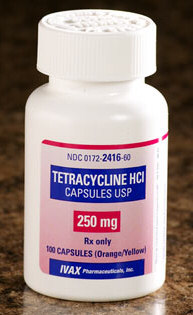 A number of antibiotics are currently used to get rid of P. acne. The most
often prescribed remedy is tetracycline. Taken twice daily before meals, the
antibiotic cannot be fully absorbed unless consumed on an empty stomach. The
acne fighter is not recommended for patients under 13 years old nor is it
advised for pregnant women. Side effects can include diarrhea or digestive
upset. A number of antibiotics are currently used to get rid of P. acne. The most
often prescribed remedy is tetracycline. Taken twice daily before meals, the
antibiotic cannot be fully absorbed unless consumed on an empty stomach. The
acne fighter is not recommended for patients under 13 years old nor is it
advised for pregnant women. Side effects can include diarrhea or digestive
upset.
Another antibiotic treatment that is often used to get rid of acne is
erythromycin. The main side effect experienced by users is dizziness. Therefore,
the antibiotic is frequently recommended for patients who canít take
tetracycline.
Doxycycline
Doxycycline may also be prescribed. For patients who cannot take either
tetracycline or erythromycin, doxycycline is a viable alternative. Unlike
tetracycline though, you need to take this medicine when you eat. Otherwise, you
may experience a bad case of nausea or subsequently vomiting after taking the
medication on an empty stomach.
Because of the side effects associated with the aforementioned antibiotics,
many acne sufferers prefer to choose another method for treating their acne.
When an Acne Condition Worsens
If either a whitehead or blackhead erupts, then pustules (elevated pus-filled
skin elevations) can develop or papules (small red bumps) may appear. In some
cases, cysts may form as well. Characterized as a puss-filled pocket just
beneath the skin, an acne-type cyst results just like a comedo, when pores
become overly clogged. This type of cyst, known as a sebaceous cyst, can be
removed by an innovative technique that makes use of a laser with a follow-up
excision of the lesion.
Fibrous Papule of the Nose:
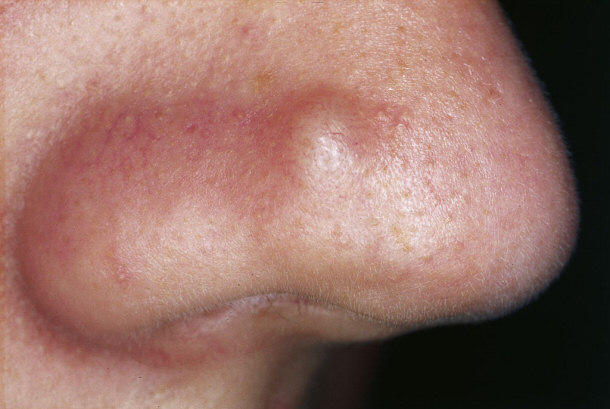
By Kuebi
via Wikimedia Commons
This two-step technique then involves making a small hole with a laser to
remove the content of the cyst. After about a month, a minimal excision is made
to remove the cystís wall. By using this method, only a small scar is produced.
Therefore, laser therapy with follow-up excision is a preferred technique for
getting rid of large, uninfected sebaceous cysts.
Why Acne and Pimples Can be Treated with Light
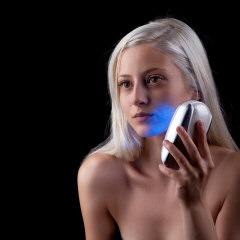 Common acne, in the form of blackheads or whiteheads, is usually the type of
acne that benefits the most from laser treatment. Laser or light therapy can be
an effective treatment as acne is a skin condition that is frequently brought on
by genetics or hormones. Despite what some people may believe, acne generally
does not occur as the result of oneís diet or from a lack of hygiene. Common acne, in the form of blackheads or whiteheads, is usually the type of
acne that benefits the most from laser treatment. Laser or light therapy can be
an effective treatment as acne is a skin condition that is frequently brought on
by genetics or hormones. Despite what some people may believe, acne generally
does not occur as the result of oneís diet or from a lack of hygiene.
Why Acne Develops
In most cases, the skin's condition is caused by hormonal imbalances or by an
increase in the production of androgen. Thatís why acne so often prevails among
adolescents and young adults, or may develop during the menstrual cycle. In some
instances, the use of certain medications may cause the skin condition or
excessive heat and humidity may contribute to pimples as well. Some patients may
also develop acne if they use noncomedogenic cosmetics or skin care products to
excess.
Are You the Right Candidate for Light Therapy?
While acne often appears on the facial area, the annoying lesions and zits
may also make an appearance on such areas of the body as the back, arms,
shoulders, legs, buttocks, and arms too. If youíve tried over-the-counter
medications that contain either salicylic acid or benzoyl peroxide to no avail,
or want to forego antibiotic treatment, then laser or light therapy may be right
for you.
Laser Treatments Can Clear Acne by as Much as 70%
Again, laser acne treatments, today, have been shown to safely and
effectively treat acne-prone skin. Patients report that acne is reduced by as
much as 60 to 70% after undergoing a course of laser treatments. Usually,
treatment results can be seen after three or four appointments.
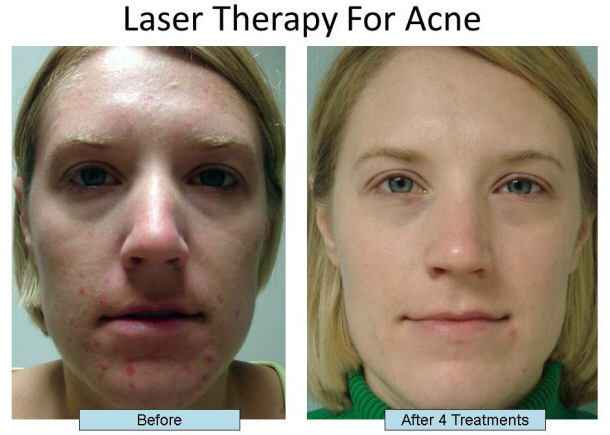
Acne Light Therapies
Dermatologist offices provide laser treatments that use one of a number of
light therapies:
Photopneumatic Acne Therapy
One of these treatments is photopneumatic therapy. This light therapy
combines the use of intense pulsed light (IPL) with a vacuum to extract the oil
out of clogged whiteheads and blackheads. While this form of laser therapy
cannot treat cysts, itís a very effective laser procedure for treating common
acne conditions.
Photopneumatic Device:
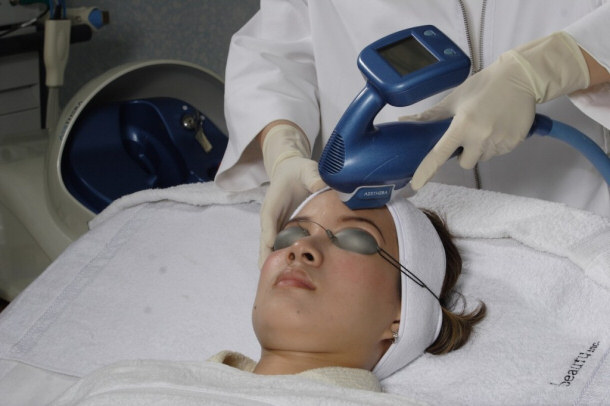
Photodynamic Acne Therapy (PDT) or Narrow Band Blue Light Therapy
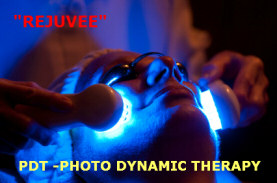 Blue light therapy, also referred to as PDT (photodynamic therapy), is the
first light therapy sanctioned by the FDA for acne treatment. A narrow band of
blue light activates a photosensitizing medicine to treat the skin condition.
While this visible light treatment is helpful in treating pimples, itís not as
effective for treating more severe forms, such as whiteheads, blackheads,
nodules, or cysts. PDT has been proven to be a successful
remedy for treating such dermatological conditions as actinic keratosis
(precancerous sun lesions), wrinkles, psoriasis, and rosacea in addition to
acne. Blue light therapy, also referred to as PDT (photodynamic therapy), is the
first light therapy sanctioned by the FDA for acne treatment. A narrow band of
blue light activates a photosensitizing medicine to treat the skin condition.
While this visible light treatment is helpful in treating pimples, itís not as
effective for treating more severe forms, such as whiteheads, blackheads,
nodules, or cysts. PDT has been proven to be a successful
remedy for treating such dermatological conditions as actinic keratosis
(precancerous sun lesions), wrinkles, psoriasis, and rosacea in addition to
acne.
|
Infrared Light Therapy:
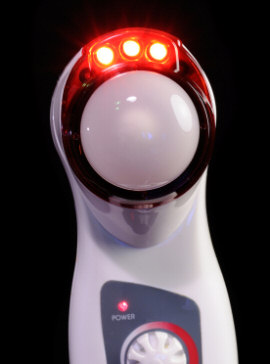
|
Infrared Light Therapy
Infrared light therapy like blue light therapy, is recommended for treating
pimples and is especially effective for treating mild inflammatory acne on the
back.
You Canít Completely Remove Acne by the Use of Light Alone
Again, if acne medications have not produced the desired results, you may
want to talk to a dermatologist about receiving laser or light therapy. However,
you have to keep in mind that light alone will not completely remove pimples or
comedo. Typically, light or laser remedies work best when used in concert
with another form of treatment. A topical medicine applied to the treatment site
or some sort of wash works well.
At this point in time, the results youíll obtain cannot be predicted with a
large degree of certainty. Thatís because most people will experience clearing
anywhere from 40% to 60%, on average, after several sessions. This figure is the
median range for people who opt for FDA-approved blue light therapy.
Therefore, you need to undergo a series of treatment sessions, or one to two
treatments each week for about a month. Each treatment session typically takes
no more than 15 minutes to complete. In order to maintain the results, youíll
probably be advised to additionally apply a topical medication to the treatment
area.
Possible Side Effects
Laser or light therapy typically causes minimal side effects. Some swelling
and redness can occur along with some discomfort, all which lasts no longer than
24 hours. Patients with darker skin tones may experience hyperpigmentation, or
darkening of the skin.
Maintain a Regular Skin Care Regimen: Basic Skin Care Tips for Treating Acne
Cleanse your Skin Twice a Day
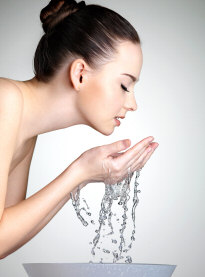 To obtain the best results for laser or light therapy, itís also important
that you practice a regimen of good skin care. Therefore, make sure that you
follow a routine where you clean your skin with a mild cleanser in the morning
and at night. To obtain the best results for laser or light therapy, itís also important
that you practice a regimen of good skin care. Therefore, make sure that you
follow a routine where you clean your skin with a mild cleanser in the morning
and at night.
Use an Alcohol-free Toner
Lightly use the tips of your fingers, cleansing not only the face but washing
the neck and along the jaw as well. If you have inflammatory acne or pimples,
use a cleanser containing benzoyl peroxide. Afterward, apply an alcohol-free
toner with a pad to clean away any leftover residue.
Apply a Topical Cream
Next, apply a topical cream or medicine, if it is required or prescribed.
Moisturize
Although it sounds counterproductive, youíll also want to apply a moisturizer
too. A light, noncomedogenic cream should be applied to lessen the chance for
peeling or dryness, two side effects that can result from the application of
acne medicines.
Before and After Laser Treatment
See how acne can be reduced by watching the following short video and viewing
the before and after pictures:
Medicine & Treatments
Top Lists:
Top 15 Hangover Cures That Actually Work
Top 15 Unusual Ways To Treat Diseases
Informational:
Computerized Physician Order Entry and ePrescribing
Health Data and Importance of Digitization
Nursing Information Systems Ė Vendor Market Analysis
Telehealth - Healthcare Informatic's Golden Egg
EHR, EMR, PHR Ė The Digital Future of Health Data
Bloodless Surgery Ė An Effective Alternative to Blood Transfusion
Medicines That Have Changed the World
The Process of Female Egg Donation
How Chemotherapy Treats Cancer
Thighplasty: Is a Leg Lift Procedure Right for You?
Treating Acne with Laser Therapy: Can it Benefit You?
Using Tanning Beds to Treat Vitamin D Deficiency
Choosing Birth Control
Social History of Patent Medicines
Biology
An Introduction to the Cells of Organisms
Cardiovascular System and Energy Systems |